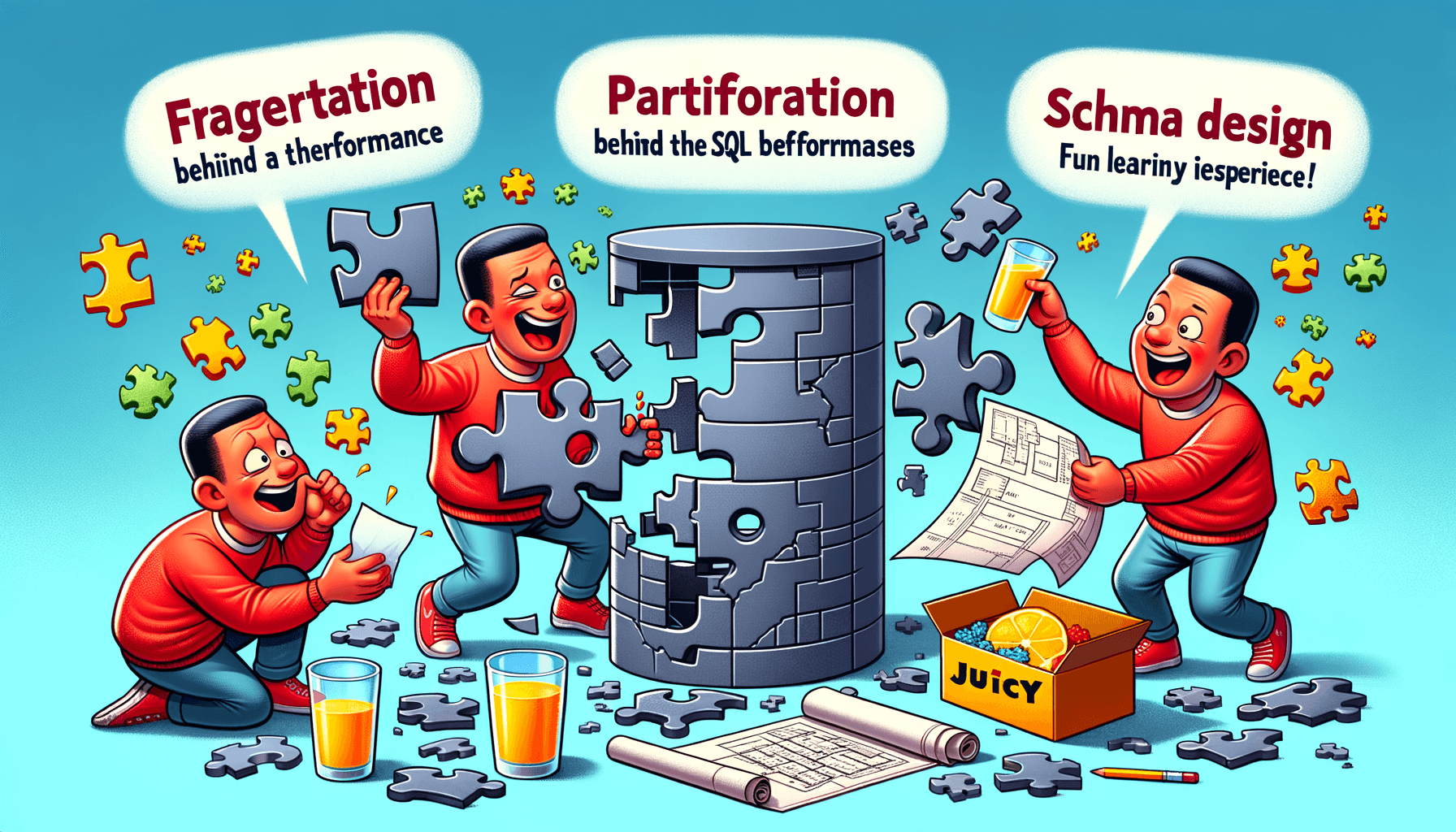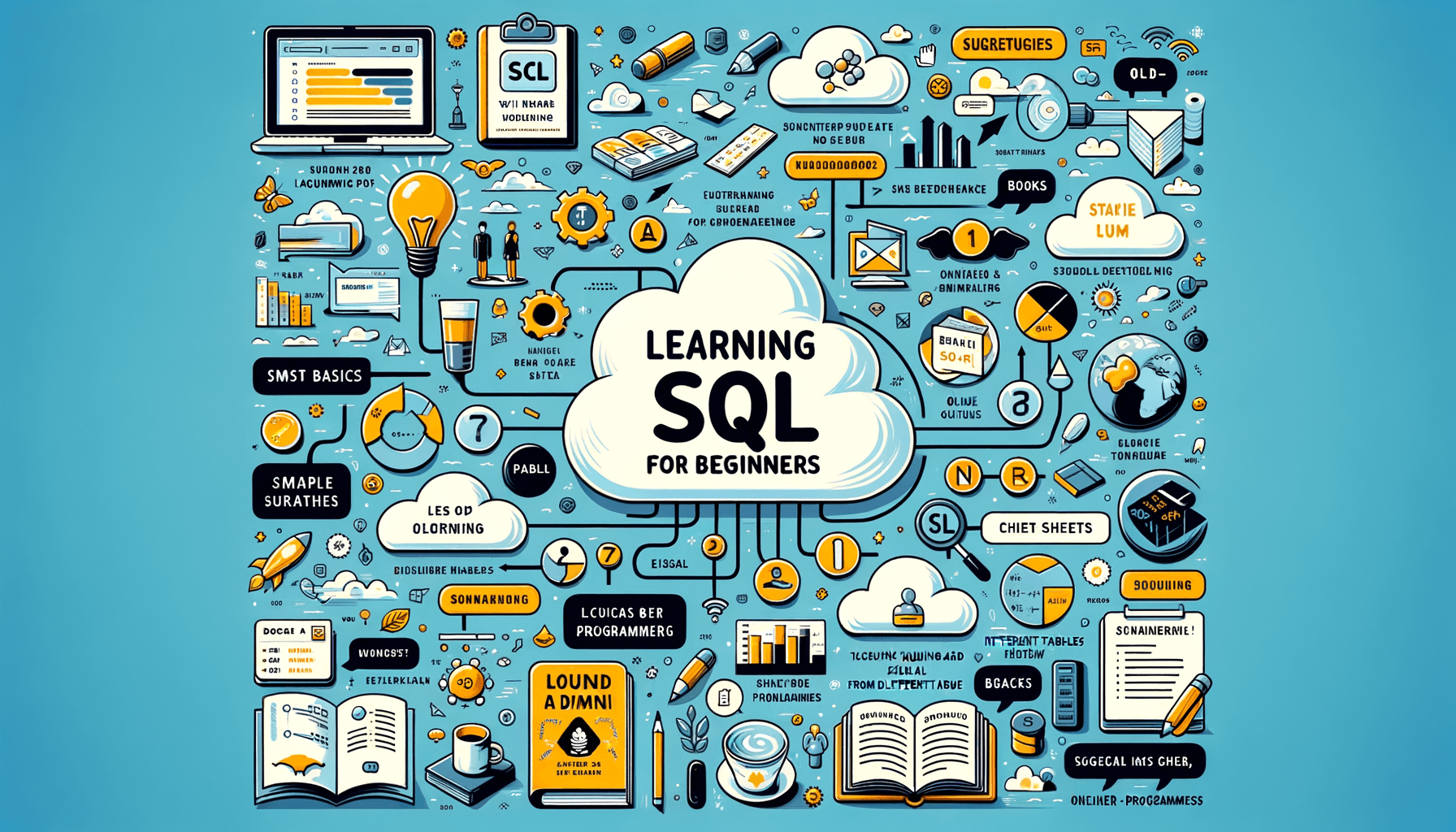A big variety of articles and resources

What are pre requisites to learn SQL?
 Sia Author and Instructor
Learn SQL
Sia Author and Instructor
Learn SQL
12 minute read
Learning SQL can open up many job opportunities and help you understand how data is stored and managed in databases. Before diving into SQL, there are several basic concepts you should understand. These will make it easier for you to learn and use SQL effectively.
Key Takeaways
- Understand basic computer concepts like operating systems and file systems.
- Learn the fundamental ideas behind databases and how they work.
- Get to know different data types and why data integrity matters.
- Familiarize yourself with relational database theory, including tables and keys.
- Understand the basics of networking and how SQL fits into networked systems.
Understanding Basic Computer Concepts
Familiarity with Operating Systems
Before diving into SQL, it's important to be comfortable using different operating systems like Windows, macOS, or Linux. Knowing how to navigate these systems will make it easier to install and use SQL tools. Mastering these basics will set a strong foundation for your SQL journey.
Basic Knowledge of File Systems
Understanding how file systems work is crucial. This includes knowing how to organize, store, and retrieve files on your computer. This skill will help you manage SQL databases more effectively. Think of it as organizing your digital workspace to make your tasks easier.
Introduction to Command Line Interfaces
The command line interface (CLI) might seem intimidating at first, but it's a powerful tool. Learning basic commands can help you interact with your computer in a more direct way. This is especially useful when working with SQL servers that often require command-line operations.
Getting comfortable with the command line can greatly enhance your ability to manage SQL databases. It’s like learning a new language that opens up more possibilities for you.
By understanding these basic computer concepts, you'll be better prepared to master SQL basics for beginners at your own pace. No credit card required. Login or sign up to start learning with SQLSkillz.
Grasping Fundamental Database Concepts
Definition and Purpose of Databases
Databases are organized collections of data. They help us store, manage, and retrieve information efficiently. Understanding databases is crucial because they are the backbone of most software applications.
Types of Databases
There are various types of databases, each serving different needs. Some common types include:
- Relational Databases
- NoSQL Databases
- In-Memory Databases
Each type has its own strengths and weaknesses, making them suitable for different tasks.
Introduction to Database Management Systems
A Database Management System (DBMS) is software that helps us interact with databases. It allows us to create, read, update, and delete data. Learning about DBMS is essential for anyone who wants to work with databases effectively.
Grasping these fundamental concepts will set a strong foundation for learning SQL and other advanced database topics.
Learning Data Types and Structures
Common Data Types in SQL
When we work with SQL, we need to understand the different data types available. These data types help us define what kind of data can be stored in each column of a table. Some common data types include integers, which are whole numbers, and strings, which are sequences of characters. We also have dates, which store calendar dates, and booleans, which represent true or false values.
Understanding Data Structures
Data structures are ways to organize and store data so that we can use it efficiently. In SQL, we often use tables to store data. Each table consists of rows and columns, where rows represent individual records and columns represent the attributes of those records. Knowing how to structure data properly is crucial for efficient data retrieval and manipulation.
Importance of Data Integrity
Data integrity means ensuring that the data in our database is accurate and consistent. This is important because inaccurate data can lead to incorrect results and decisions. We can maintain data integrity by using constraints, such as primary keys and foreign keys, which help enforce rules about what data can be entered into the database.
Maintaining data integrity is essential for building reliable and trustworthy databases.
Introduction to Relational Database Theory
Concept of Tables and Relations
In relational databases, data is stored in tables. Each table consists of rows and columns, where rows represent records and columns represent attributes. Understanding how tables relate to each other is crucial for designing efficient databases. Relations between tables are established through keys, which we will discuss next.
Primary and Foreign Keys
Primary keys are unique identifiers for records in a table. They ensure that each record can be uniquely identified. Foreign keys, on the other hand, are used to link records between tables. They reference primary keys in other tables, creating a relationship between the data. This is essential for maintaining data integrity and enabling complex queries.
Normalization and Its Importance
Normalization is the process of organizing data to reduce redundancy and improve data integrity. It involves dividing large tables into smaller, related tables and defining relationships between them. This process helps in maintaining consistency and makes the database more efficient. Normalization is a key concept in database design and is often covered in courses like the zero to postgresql junior dba: complete database administration course.
By understanding these fundamental concepts, we can design databases that are both efficient and easy to manage. This foundation is crucial for anyone looking to gain practical SQL skills with real-world problems.
Familiarity with Basic Programming Concepts
Understanding Variables and Constants
In programming, we often need to store data. This is where variables and constants come in. Variables are like containers that hold information which can change, while constants hold information that stays the same. Knowing the difference between these two is crucial for writing effective code.
Basic Control Structures
Control structures help us decide the flow of our programs. The most common ones are if-else statements and loops. If-else statements let us make decisions based on conditions. Loops help us repeat actions without writing the same code over and over. Understanding these basics will make your journey into SQL smoother.
Introduction to Functions and Procedures
Functions and procedures are blocks of code designed to perform specific tasks. They help us break down complex problems into smaller, manageable parts. In SQL, functions can be used to perform operations on data, making it easier to analyze and manipulate information. Learning how to use functions and procedures will greatly enhance your SQL skills.
Understanding Data Modeling
Entity-Relationship Diagrams
Entity-Relationship Diagrams (ERDs) are visual tools that help us understand the structure of a database. They show how different entities (like tables) relate to each other. ERDs are essential for planning a database because they help us see the big picture before we start building.
Concept of Schema
A schema is like a blueprint for a database. It defines how data is organized and how the relationships between data are managed. When we design a schema, we decide what tables we need, what fields they will have, and how they will connect to each other. This step is crucial for ensuring that our database will be efficient and easy to use.
Designing a Database Model
Designing a database model involves several steps:
- Identify the entities that need to be stored.
- Determine the relationships between these entities.
- Define the attributes (fields) for each entity.
- Create the tables and set up the relationships in the database.
Good database design is key to making sure our data is accurate and easy to retrieve. It helps us avoid problems like data redundancy and inconsistency.
Basic Knowledge of Networking
Understanding Network Protocols
To effectively use SQL, we need to understand network protocols. These protocols are like rules that let computers talk to each other. Knowing these rules helps us manage data better.
Client-Server Architecture
In a client-server setup, one computer (the client) asks for data, and another computer (the server) gives it. This is important for SQL because we often get data from a server. Think of it like ordering food at a restaurant: you ask for what you want, and the kitchen (server) prepares it for you.
Role of SQL in Networked Environments
SQL plays a big role in networked environments. It helps us get and change data stored on servers. For example, websites use SQL to show you information when you log in or sign up. This makes SQL a key tool for managing data across networks.
Familiarity with Software Development Tools
Integrated Development Environments
To effectively work with SQL, we need to be comfortable using Integrated Development Environments (IDEs). These tools help us write, test, and debug our code more efficiently. IDEs often come with features like syntax highlighting and code completion, which make coding easier and faster.
Version Control Systems
Version control systems are essential for tracking changes in our code. They allow us to manage different versions of our projects and collaborate with others. By using these systems, we can easily revert to previous versions if something goes wrong. This is especially useful when working on complex SQL queries.
Database Management Tools
Database management tools help us interact with our databases more effectively. These tools provide a graphical interface for executing SQL queries, managing database objects, and monitoring performance. They are crucial for maintaining the health and efficiency of our databases.
Understanding these tools will help us fit data & SQL skills into our busy life with micro-courses. Master SQL basics, perfect for beginners. Learn at your own pace. Login or sign up to start learning.
Introduction to Data Security Concepts
Importance of Data Privacy
In today's digital world, keeping our data safe is more important than ever. Data privacy means making sure that personal information is kept secret and only shared with the right people. This is especially important when working with SQL databases, as they often hold sensitive information.
Basic Security Measures
To protect our data, we need to follow some basic security steps. These include using strong passwords, regularly updating software, and limiting who can access the data. By following these steps, we can help keep our SQL databases safe from hackers and other threats.
Role of SQL in Data Security
SQL plays a big part in keeping data secure. It allows us to set permissions, so only certain people can see or change the data. SQL also helps us track who has accessed the data and when. This makes it easier to spot any suspicious activity and take action if needed.
When we use SQL to manage our data, we must always think about security. This helps protect the information and keeps it safe from harm.
Understanding the Role of SQL in Data Analysis
SQL for Data Retrieval
SQL is a powerful tool for getting data from databases. We can use it to pull out specific information we need. This is very useful for a data analyst who needs to look at data to find patterns or answers. Learning SQL is a key skill for anyone working with data.
SQL in Business Intelligence
In business intelligence, SQL helps us turn raw data into useful insights. We can create reports and dashboards that show important trends and metrics. This helps businesses make smart decisions based on real data.
Advanced SQL Queries for Analysis
With advanced SQL queries, we can do more complex analysis. This includes joining multiple tables, using subqueries, and applying functions to data. These skills are important for solving real-world problems and making sense of large datasets.
SQL is a powerful tool for data analysis, helping you make sense of large datasets. If you're eager to learn more and boost your skills, check out our courses. We offer a range of classes designed to help you become a SQL expert. Visit our website to explore our course catalog and find the perfect fit for you!
Conclusion
Learning SQL is a valuable skill that opens up many opportunities in the tech world. Before diving into SQL, it's important to have a good understanding of basic computer skills, some knowledge of databases, and a bit of experience with programming. These prerequisites will make it easier to grasp SQL concepts and apply them effectively. By building a strong foundation, you can confidently explore more advanced SQL topics and use this powerful tool to manage and analyze data. With dedication and practice, anyone can become proficient in SQL and use it to unlock new possibilities in their career.
Frequently Asked Questions
What basic computer skills do I need to learn SQL?
You should know how to use an operating system, understand file systems, and be familiar with command line interfaces.
Why is it important to know about databases before learning SQL?
Knowing what databases are, the types, and how database management systems work will help you understand SQL better.
What are common data types in SQL?
Common data types in SQL include integers, text, dates, and boolean values.
What is a relational database?
A relational database uses tables to store data and links them using keys, like primary and foreign keys.
Do I need to know programming to learn SQL?
Yes, having basic programming knowledge like variables, control structures, and functions will help you learn SQL more easily.
What is data modeling and why is it important?
Data modeling involves creating diagrams and schemas to design a database. It helps ensure the database is organized and efficient.
How does SQL work in networked environments?
SQL is often used in client-server setups where the client requests data and the server responds. Understanding network protocols and architecture helps in these scenarios.
Why is data security important in SQL?
Data security ensures that private information is protected. SQL includes features to help keep data safe, like encryption and access controls.
Related Articles

3 Juicy Secrets Behind Sluggish SQL!!
5 minute read

Can I learn SQL without any programming knowledge?
12 minute read

How Difficult Is SQL to Learn? A Comprehensive Guide
8 minute read




